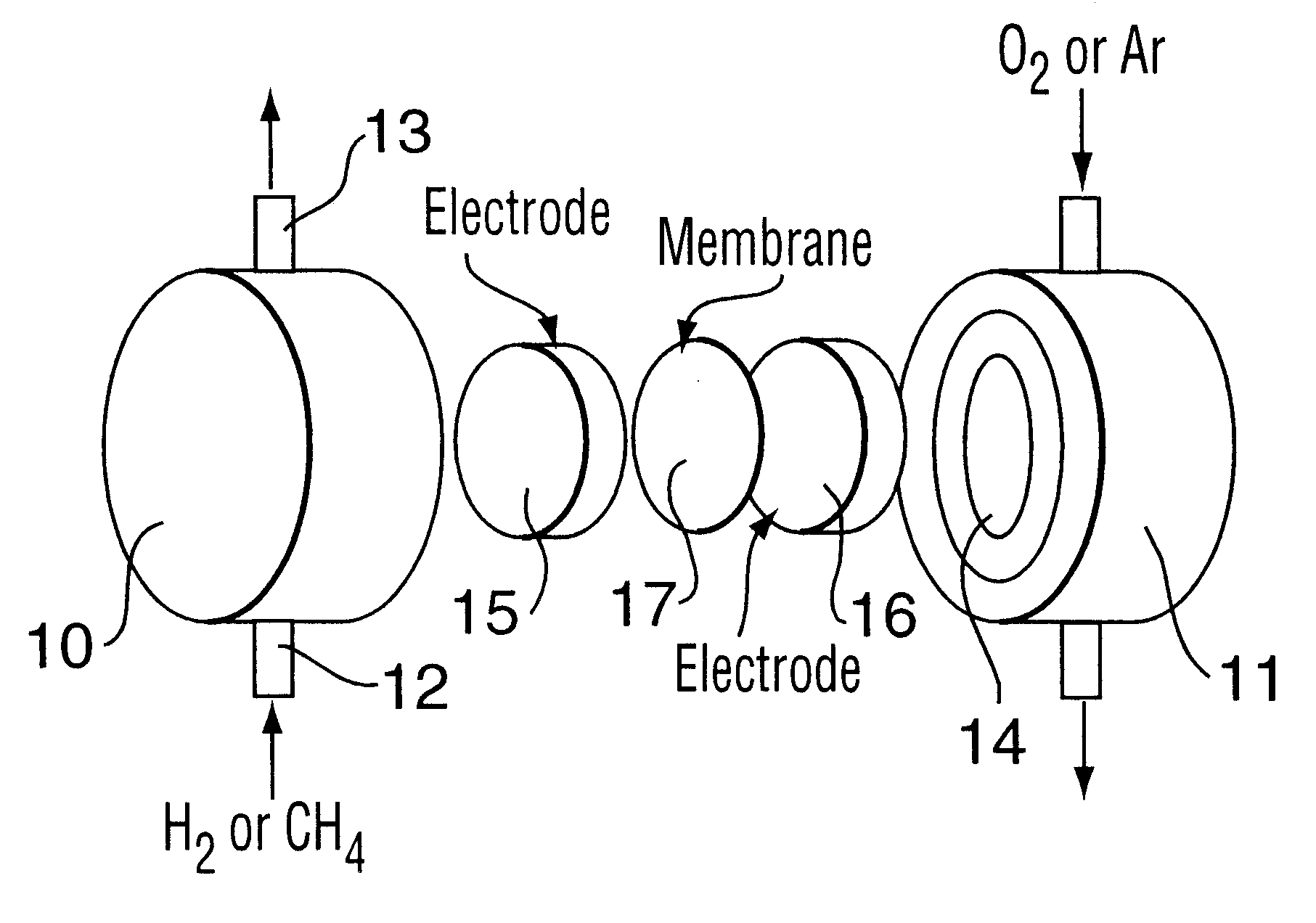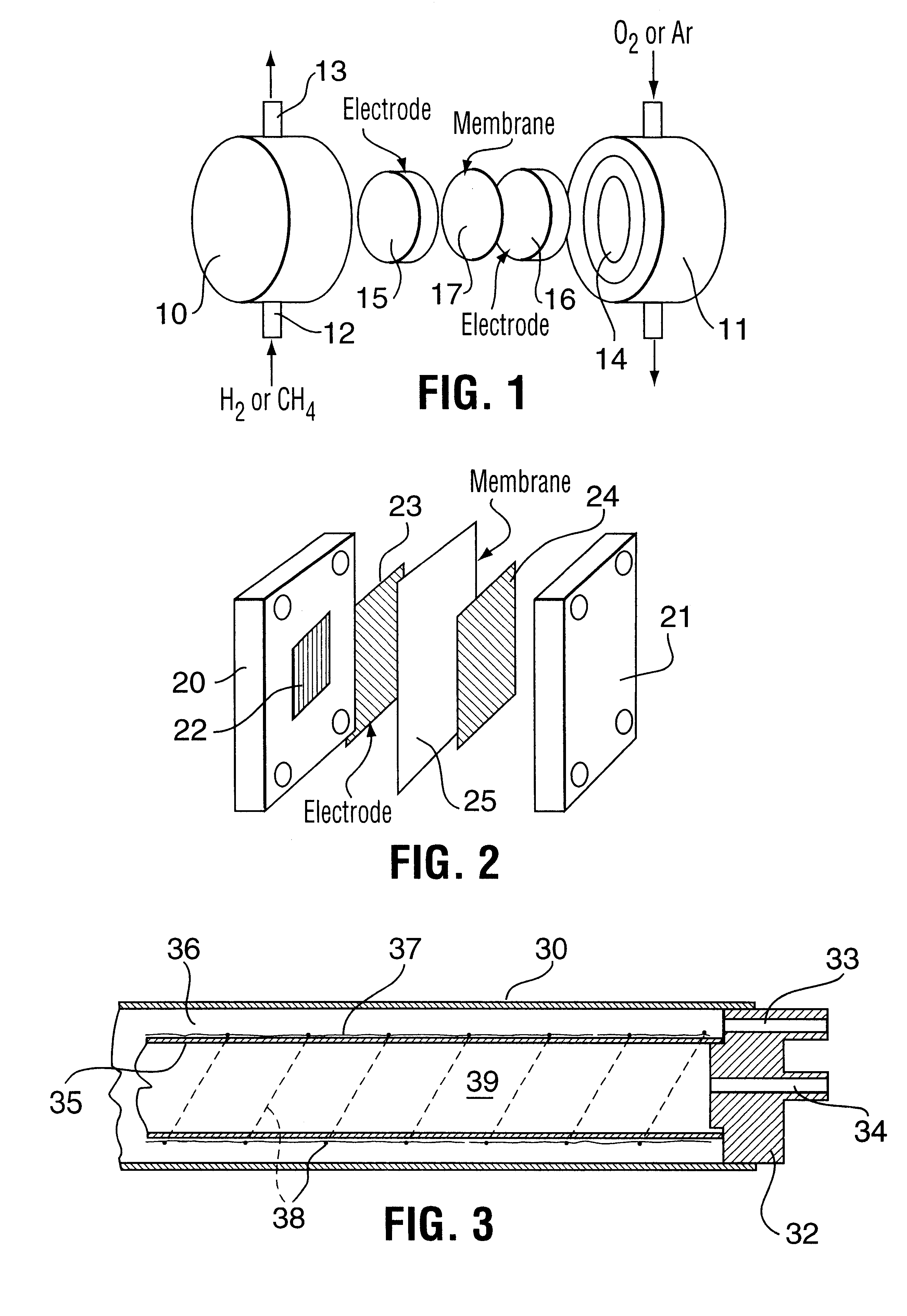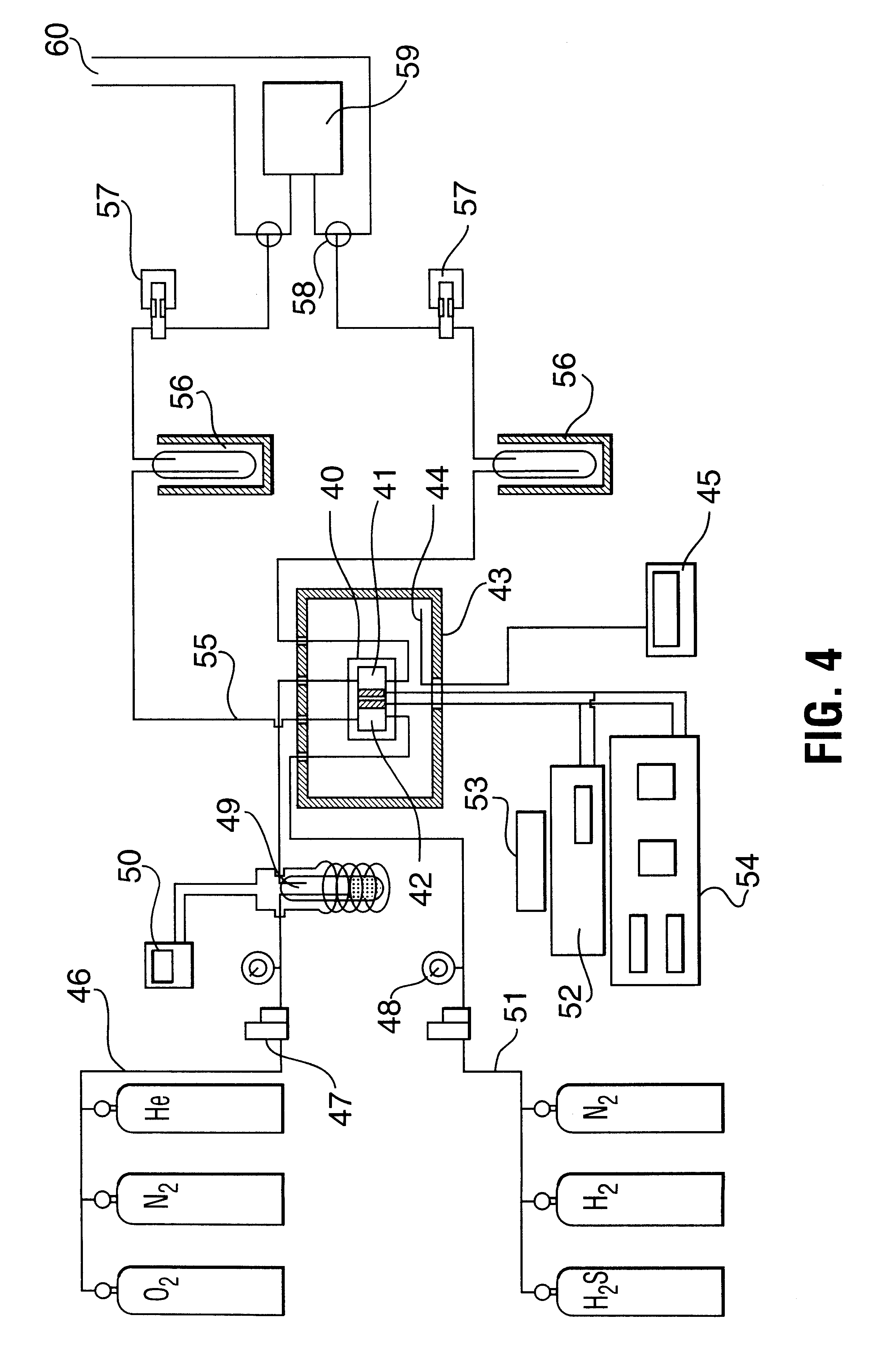Electrochemical oxidation of hydrogen sulfide
a hydrogen sulfide and electrochemical technology, applied in the direction of electrodes, fuel cells, photographic processes, etc., can solve the problems of hydrogen sulfide, corrosive and extremely toxic gas, gas streams containing hydrogen sulfide,
- Summary
- Abstract
- Description
- Claims
- Application Information
AI Technical Summary
Problems solved by technology
Method used
Image
Examples
example 2
A test was conducted on the electrolysis system of FIG. 4 to determine the dependence of potential and H.sub.2 S conversion as a function of temperature. It was operated as a H.sub.2 S / O.sub.2 fuel cell with a 60.24% MoS.sub.2 / C anode catalyst and a 2.41% Pt / C cathode catalyst (P.08 above). The cell was operated at a pressure of 52 psi (0.36 MPa) and at varying temperatures up to 150.degree. C. The results are illustrated in FIG. 5, which clearly shows the favourable effect of operation at high temperatures, curve (a) showing conversion and (b) showing potential.
example 3
The relationship of H.sub.2 S conversion to anode compartment feed gas flow rate was studied on the system of FIG. 4 at operating as a H.sub.2 S / O.sub.2 fuel cell at conditions of 145.degree. C. and 52 psig (0.36 MPa). For this test, a 9.88% Pd / C anode 2.05% Pt / C catalyst and cathode catalyst combination (P.14) of Table 1 was used. The tests were carried out at flow rates of 4 cm / min, 9 cm.sup.3 / min and 16 cm.sup.3 / min and the results obtained are shown in FIG. 6, with curve (a) being 4 cm.sup.3 / min, (b) 9 cm.sup.3 / min and (c) 16 cm.sup.3 / min.
example 4
In order to determine the stainable operability of the H.sub.2 S / O.sub.2 fuel cell, tests were conducted on the system of FIG. 4 over an extended period while measuring the potential as a function of resistance in the external circuit. The 7.83% Pd / C anode and 2.55% Pt / C cathode catalyst combination (P.03) of Table 1 was used and the fuel cell was operated at a temperature of 125.degree. C. and a pressure 40 psig (0.275 MPa) . The results are shown in FIG. 7 with the curve (a) being for fresh catalyst and curve (b) after 36 hours in operation. The results clearly demonstrate the reliability of the high temperature, high pressure operation of this system.
PUM
| Property | Measurement | Unit |
|---|---|---|
| Temperature | aaaaa | aaaaa |
| Pressure | aaaaa | aaaaa |
| Pressure | aaaaa | aaaaa |
Abstract
Description
Claims
Application Information
 Login to View More
Login to View More - R&D
- Intellectual Property
- Life Sciences
- Materials
- Tech Scout
- Unparalleled Data Quality
- Higher Quality Content
- 60% Fewer Hallucinations
Browse by: Latest US Patents, China's latest patents, Technical Efficacy Thesaurus, Application Domain, Technology Topic, Popular Technical Reports.
© 2025 PatSnap. All rights reserved.Legal|Privacy policy|Modern Slavery Act Transparency Statement|Sitemap|About US| Contact US: help@patsnap.com



